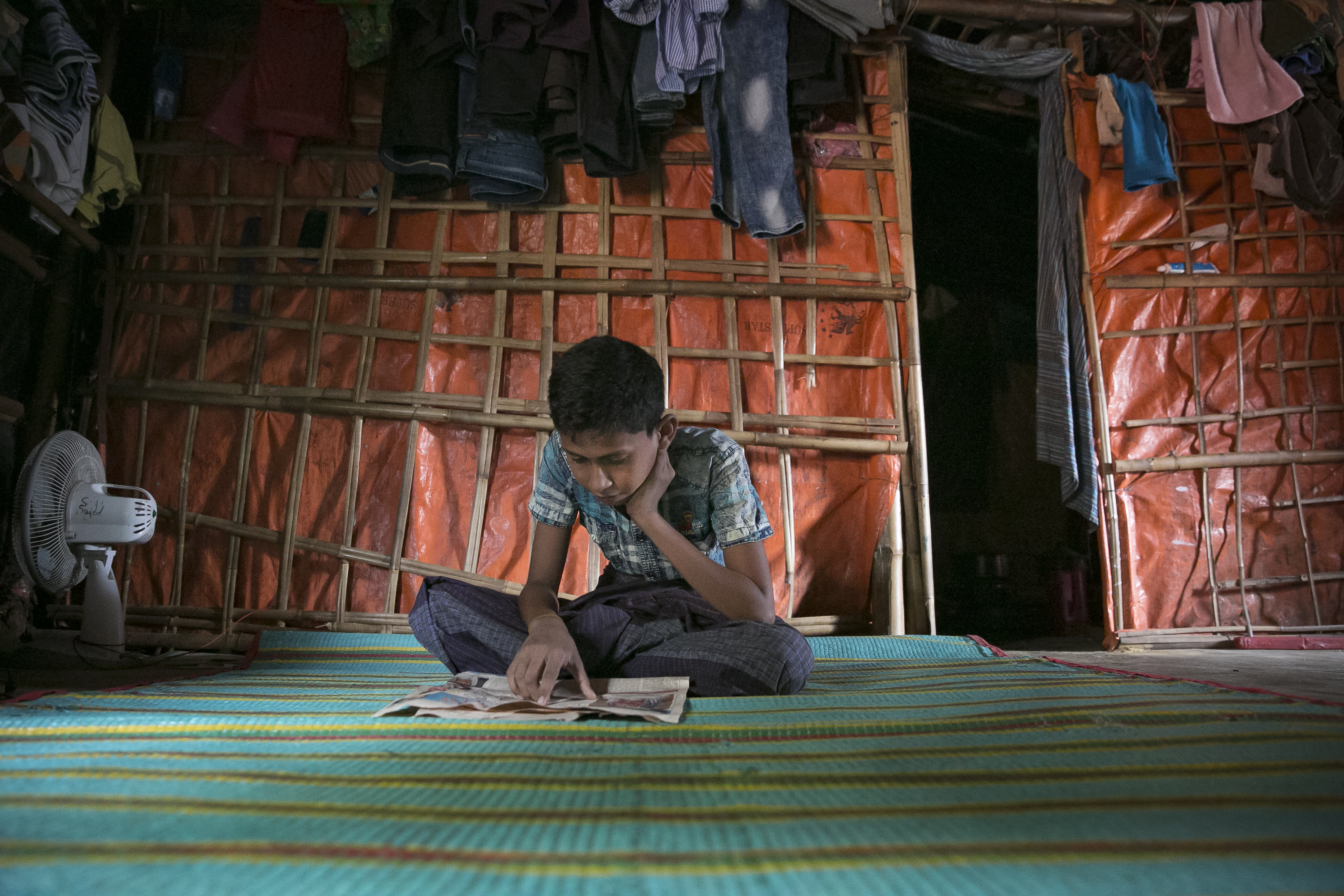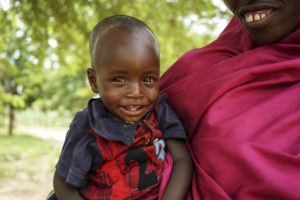 Over 400 extreme weather events are recorded every year, about four times as many as in the 1970s. More than 3,700 disasters caused by natural hazards were recorded over the past ten years, more than one every day. Of these disasters, 84 percent were triggered by weather-related events, affecting 1.9 billion people.
Over 400 extreme weather events are recorded every year, about four times as many as in the 1970s. More than 3,700 disasters caused by natural hazards were recorded over the past ten years, more than one every day. Of these disasters, 84 percent were triggered by weather-related events, affecting 1.9 billion people.
In 2018, weather-related events accounted for 16.1 million new displacements, while the majority of refugees originate from, and live in, climate hotspots, and are exposed to severe flooding, heat waves and drought. The livelihoods of nearly one billion people in some 100 countries are threatened by desertification. Every year, about 12 million hectares worldwide are lost to land degradation, and the rate is increasing.
Each of the world’s eight worst food crises in 2018 experienced the double impact of both conflict and climate shocks, which led to significant increases in the severity of acute food security. Some 60 percent of the 50 countries with the highest numbers of new displacements in 2018 faced both conflict and disaster-induced displacement.
The science is clear. Climate change is happening at an alarming pace. The world must act now to limit global warming. These changes will continue for several decades, even if there are dramatic cuts in global emissions of greenhouse gases. The 2018 Intergovernmental Panel on Climate Change (IPCC) report outlines what kinds of impacts we can expect if we meet the best-case Paris agreement target of a 1.5°C temperature rise, and what would happen if temperatures rise even more. It is still possible to reach the Paris target if all take urgent, ambitious action to cut emissions.
 The impacts of climate change are unevenly weighted against the poorest people, the most exposed and those with the least resources to withstand climate shocks and stresses. Those who have contributed the least to the problem are suffering the most. Governments and partners must step up to address climate change and promote sustainable development that prioritizes the most vulnerable.
The impacts of climate change are unevenly weighted against the poorest people, the most exposed and those with the least resources to withstand climate shocks and stresses. Those who have contributed the least to the problem are suffering the most. Governments and partners must step up to address climate change and promote sustainable development that prioritizes the most vulnerable.
Climate change impacts internationally guaranteed human rights, including the right to life, water and sanitation, food, health, housing, self-determination, culture and development. Human rights obligations require the international community to take urgent action to mitigate emissions, support adaptation and ensure climate change is participatory.
Humanitarian action must be fully funded if it is able to meet the increasing levels of suffering brought about by climate change. Climate change increases the frequency and intensity of extreme weather events such as droughts, as well as increases food insecurity and drives up displacement and migration. It also acts as a threat multiplier for conflict and instability and compromises the achievement of the Sustainable Development Goals.
Global heating is an emergency that impacts upon the lives and well- being of children in much the same ways as other humanitarian crises. Indications are that children are already disproportionately affected by global warming and will likely bear the brunt of on-going and future environmental changes. Over 99 percent of deaths already attributable to climate-related changes occurred in developing countries. Globally, millions of children are already experiencing violations of their rights in relation to access to clean water, sanitation, health services, education, food, and shelter as a result of global heating, environmental degradation, and poor management of natural resources.
The climate crisis also has gender dimensions. Environmental justice and gender equity are interlinked. Domestic chores, such as harvesting water and firewood, are predominantly carried out by women and girls. Changes in the climate may significantly decrease the availability of water and other natural resources, and increase the time needed to complete these tasks, reduce the time available for school and livelihoods, and increase the risk of other rights violations. Children need to be protected from disasters, conflicts, and population displacements resulting from resource scarcity and global warming.
There are clear and significant links between realising children’s rights and ensuring the environment is protected, as reflected in the Convention on the Rights of the Child.
Article 6
- Parties recognize that every child has the inherent right to life.
- Parties shall ensure to the maximum extent possible the survival and development of the child.
Article 24
- Parties recognize the right of the child to the enjoyment of the highest attainable standard of health …
- Parties shall pursue full implementation of this right and, in particular, shall take appropriate measures:
(c)To combat disease and malnutrition, including within the framework of primary health care, through the application of readily available technology and through the provision of adequate nutritious foods and clean drinking-water, taking into consideration the dangers and risks of environmental pollution; ...
(e)To ensure that all segments of society, in particular parents and children, are informed, have access to education and are supported in the use of basic knowledge of child health and nutrition, … hygiene and environmental sanitation and the prevention of accidents…
Article 27
- Parties recognize the right of every child to a standard of living adequate for the child’s physical, mental, spiritual, moral and social development.
Article 29
- Parties agree that the education of the child shall be directed to:...
(e)The development of respect for the natural environment.
Climate change demands increased resources for risk management and preparedness in at-risk contexts, where most climate crises occur. An investment of US$6 billion for disaster risk reduction over the next 15 years is projected to provide a US$360 billion return on investment in avoided losses. Disaster risk reduction and preparedness are under-funded and often constrained by risk aversion and current funding modalities.
National governments need to adopt or strengthen legal frameworks and policies, focusing on protecting internally displaced people. Millions of people are displaced by climate change every year, pushed out by extreme weather events or forced to relocate just to survive. In 2018, some 17.2 million were displaced due to disasters in 144 countries and territories. Legal channels for migration with dignity should be established, as well as durable legal status for people displaced across borders.
Scaled-up investment in local disaster response capacity is critical. International humanitarian organisations are already unable to reach the annual humanitarian caseload. We must ensure that humanitarian responders, including national NGOs, have the resources and capacity necessary to respond to expected increases in humanitarian need.
Climate action must be inclusive. Women, youth, people with disabilities and indigenous groups must be recognized as key advocates and active participants in climate risk action. Their needs must be considered and their contributions form part of solutions.
There is no shortage of positive and impactful work that can be completed now in order to reduce climate change, and to reduce the already unavaoidable impacts on the world’s most vulnerable populations.
1 thought on “There are four times more weather related disasters now than in the 1970s”